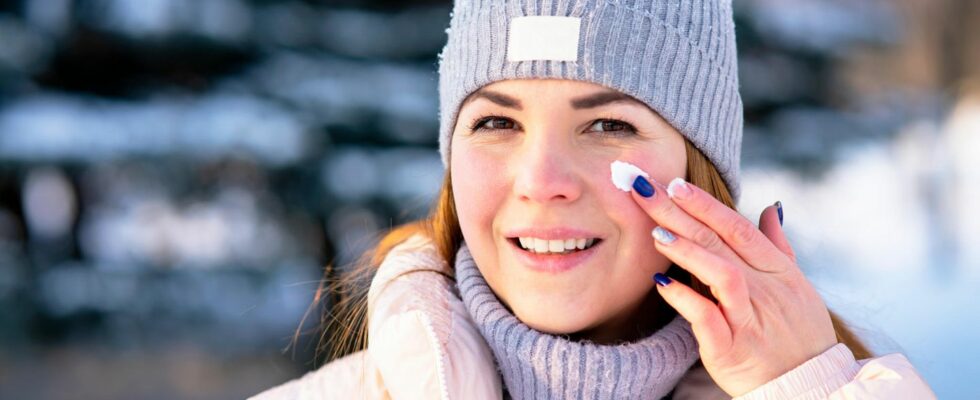The colder, the richer?
You can use these principles to care for your skin in winter
Cold, heating air, etc. can affect our skin.
© Дарья Шуйскова / Adobe Stock
The temperatures are falling, so let’s get the rich cream out of the cupboard – right? You can really stick to these care principles in winter.
We have heard often enough that we should use rich care creams in the cold season. At first glance, this makes perfect sense: After all, we want to get rid of the dry skin feeling that creeps in around November and doesn’t go away until March. But is this really a principle that we can all follow?
The colder, the richer? This is what happens to your skin in winter
What does winter do to our skin? Cold and dry (heating) air remove moisture from the skin. On the one hand, a dry, tight feeling is not exactly pleasant, but on the other hand, sufficient hydration is also essential for the barrier function of our skin. Only with an intact skin barrier can our skin defend itself against external influences such as (bad) bacteria, viruses, fungi and pollutants. A disturbed skin barrier can manifest itself with redness, irritation, inflammation and impurities! So what do we do about moisture loss?
So that less water escapes the skin, we can “seal” it. Our sealant of choice: a cream. While fluffy, light textures that are absorbed immediately are formulated with squalane or jojoba oil, rich face creams often consist of shea butter or avocado oil. The thicker the consistency and higher the fat content, the better the fats seal the skin and protect it from water loss. That solves the mystery, right? Not quite yet. On the one hand, the skin still lacks moisture. A cream only provides this to a limited extent – and on the other hand, rich creams with occlusive fats are not the best for all skin types.
The colder it is, the more I pay attention to how my skin feels
As is often the case in skin care, there is no solution for all skin types. Richer textures in winter aren’t “wrong,” but they don’t help everyone. Oily or combination skin, for example, also produces in winter enough sebum, which seals the skin from water loss, so that it does not need any help in the form of a cream. Very dry skin, on the other hand, may be happy about the high-quality lipids in the rich cream and need them to strengthen the skin barrier. Cold can also reduce sebum production, which is more important for dry skin than for oily skin.
It’s important for you: Don’t just apply a thick cream “just because that’s what you do.” On the other hand, feel what your skin needs every day and, if necessary, care for the skin region: You can apply an occlusive cream around the eyes, nose or mouth; your normal day cream may be sufficient on the rest of the face. If you apply a rich cream to oily skin where sebum production is already increased, this can lead to impurities. If your skin still feels dry, it may not be due to the richness of your cream, but also to it lack of moisture lay.
The colder, the more humidity!
Let’s rephrase the first principle to: “The colder, the more moisture.” Because you can never go wrong with that! Moisturizers like Glycerin, hyaluronic acid or aloe vera are always good for your skin without promoting the development of impurities. Every skin type benefits if you apply a moisturizing serum to damp skin after cleansing. Dry skin can then lock in the newfound moisture with a cream, while oily skin may not need this at all.

